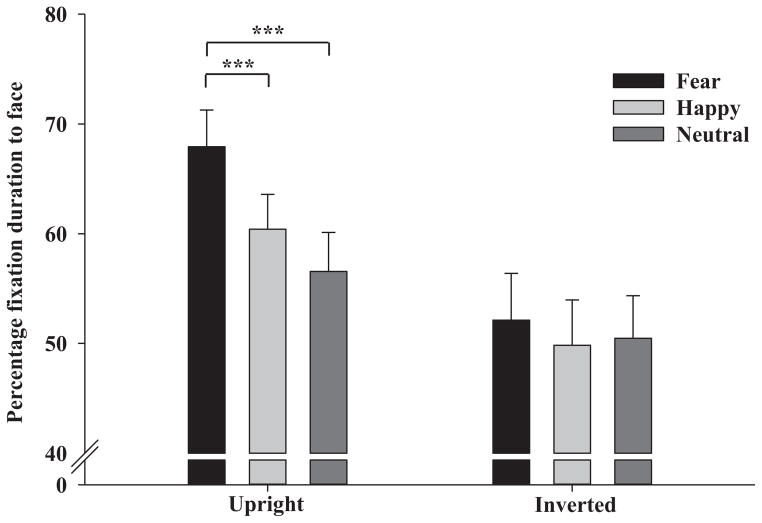Fig. 1.
Mean percentage fixation duration to the face relative to the peripheral target exhibited by the 5-month-olds in the upright condition of Heck and colleagues (2016) and the 5-month-olds in the inverted condition in the current study. The infants in the original study (Heck et al., 2016) looked significantly longer at the face relative to the checkerboard when the face was fearful compared with both happy and neutral faces. In contrast, the 5-month-olds in the inverted condition did not significantly differentiate their attention as a function of emotion. The error bars indicate 1 standard error. ***p < .001.

